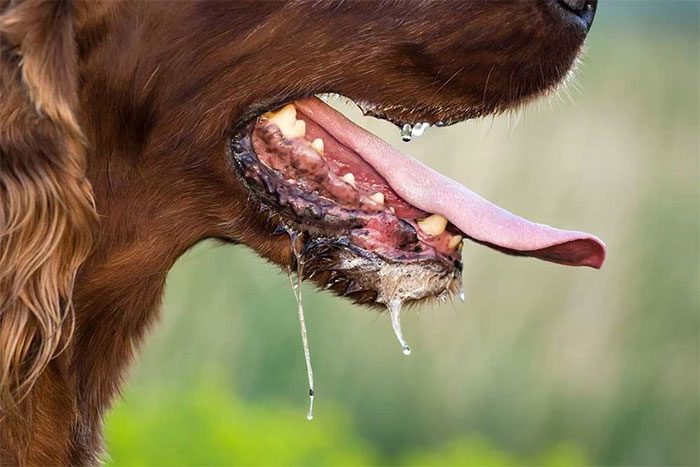According to the Centers for Disease Control and Prevention (CDC), approximately 59,000 people die from rabies worldwide each year. About 99% of these cases are caused by bites from rabid dogs.
As reported by Healthline, rabies is caused by a virus that affects the central nervous system and spinal cord, particularly the brain of dogs.
Initially, the virus resides in muscle tissue and migrates to the nervous system, eventually infiltrating the salivary glands. This is why most images of rabies depict dogs foaming at the mouth or drooling.

Rabies is an incurable virus that attacks the brain and spinal cord of mammals. (Photo: nolancountyhealth).
How is Rabies Transmitted?
Dogs are the most common carriers of the rabies virus. Dogs, cats, and other mammals can transmit the virus to humans through bites or scratches.
According to the CDC, the incubation period before clinical symptoms appear can range from 1 day to over a year. In dogs, the incubation period typically lasts from 2 weeks to 4 months, depending on factors such as the site of virus entry and the viral load.
Symptoms of Rabies in Dogs
After being bitten by a rabid animal, the disease progresses through several stages. There are three stages of rabies symptoms in dogs, although some symptoms may not be very pronounced.
Initial Stage:
- Normally docile dogs may become agitated and aggressive. Sometimes, lively dogs may also turn timid and fearful.
- The site of the bite may become itchy, causing the dog to lick or scratch it, leading to hair loss and bleeding.
Severe Stage:
At this point, the virus has reached the dog’s brain and can affect its spinal cord. This is when dogs experience the severe stage with symptoms such as:
- Dogs become aggressive, easily provoked, and may bark viciously at strangers.
- They may pounce when called by their owners and jump up to bark at any faint noise.
- Dogs exhibit signs of appetite loss, eating and chewing on non-food items like stones, dirt, and garbage (pica).
- Pupils are dilated, and the eyes are red.
- Excessive drooling, foaming at the mouth, restlessness, hyper-vigilance, fearfulness, or increased aggression.
- Attacking other dogs and even humans.
Paralytic Stage
This condition can start partially and may progress to complete paralysis, coma, and death within a few days.
- Continuous drooling or foaming at the mouth.
- The dog is typically unable to close its mouth, with the jaw hanging open.
- The dog’s body may start trembling, affecting its ability to walk.
Dogs may also skip the second stage and move directly to the final stage after showing the first symptoms of rabies.
Once the initial signs of rabies in dogs appear, the animal will enter the active viral stage within about 7 days, with each stage lasting approximately 2-3 days.
Preventing Rabies
The most effective way to prevent rabies in dogs is to vaccinate both yourself and your pets. Puppies should receive their first vaccine around 12 to 16 weeks of age.
Vaccination for both animals and humans has significantly reduced the number of rabies cases in the United States, with the country reporting two to three rabies-related deaths each year.
Avoid stray dogs and wild animals (such as raccoons, foxes, and bats), as they have the highest risk of carrying the rabies virus.



















































